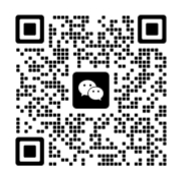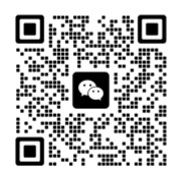Second, the working principles and characteristics of various Touch screen Panel
1. Resistance touch screen
The working principle of the resistance touch screen is to detect the touch position through the contact of the two layers of transparent conductive membrane (ITO coating). When the user touches the screen with his finger or touching a pen, the upper and lower layers of conductive membrane will be exposed to change the flow of the current, so as to detect the position of the touch action. The resistance touch screen has high accuracy and sensitivity, which can support multi -touch, but its outer film is easily scratched and the light transmission rate is low.
The advantages of resistance touch screens include:
High accuracy: At the level of pixels, the maximum resolution can reach 4096x4096.
It is not affected by environmental factors: the screen is not affected by dust, water vapor and oil, which can be used in various harsh environments.
Good compatibility: You can use any object to touch, and you can operate even with gloves.
Low cost: Due to the maturity and low threshold of technology, the cost is cheaper.
The disadvantages of the resistance touch screen include:
A long response time: Compared with other types of touch screens, the response time of the resistance touch screen is longer.
Short life: Because the outer film is easily scratched, the life of the touch screen is relatively short.
Low -through rate: The multi -layered structure can cause a large light loss, and the backlight source needs to be increased to make up for the problem of poor light transmission.
2. Capacitor ouch screen Panel
The working principle of a capacitive touch screen is to use the current of the human body to work. When the user touches the screen with his fingers, the human charge will cause the charge of the conductive layer to detect the touch position. Capacitor touch screens have the advantages of high accuracy, fast response speed, and good resistance to scratch. They support multi -touch and have a high light transmission rate.
The advantages of capacitive touch screens include:
Fast response speed: Due to the principle of capacitive induction, the reaction speed of the capacitor touch screen is very fast.
Light transmission rate: Compared with the resistance -type touch screen, the light transmission rate of the capacitor touch screen is higher.
Anti -trauma can be good: Capacitor touch screen surface covers a protective layer, and the injury resistance is better.
The disadvantages of capacitive touch screens include:
It is not sensitive to non -conductive objects: such as wearing gloves or hand -held non -conductive objects without response.
Easy to be affected by the environment: When the environmental temperature and humidity change, it may cause drift and cause inaccurate.
3. Infrared ouch screen Panel
The working principle of the infrared touch screen is to detect the touch position through the infrared matrix. In front of the display, a circuit board frame is installed. The circuit board is lined with infrared transmission tubes and infrared receiving tubes on the four sides of the screen, which corresponds to the infrared matrix with horizontal and vertical cross. When the user touchs the screen, the finger will block the horizontal and vertical two infrared rays of the position, so as to determine the position of the touch point on the screen.
The advantages of infrared touch screens include:
Low price: The cost of infrared touch screen is relatively low.
Convenient installation: No card or any other controller, can be used on a computer of various grades.
Not with current, voltage and electrostatic interference: suitable for some harsh environmental conditions.
The disadvantages of infrared touch screens include:
Low resolution: Compared to other types of touch screens, the resolution of infrared touch screen is low.
Disclosure of light: Multi -layered self -adjustment and self -recovery hardware adaptability is needed when used in an environment with large changes in light.
4.Surface sound wave -type ouch screen Panel
The working principle of the surface sound wave type touch screen is to use an ultrasonic sensor to form a sound wave grid to detect the touch position. The touch screen can be a glass tablet with a flat, spherical or column surface, which is installed in front of the display screen. When the fingers touch the screen, the finger absorbs part of the sound wave energy, and the controller detects the attenuation of the receiving signal at a certain moment, thereby calculating the position of the touch point.
The advantages of the surface sound -wave touch screen include::
High reliability: Surface sound wave touch screen has high reliability and durability.
High -precision: Being able to perceive the third axis (Z axis) coordinates, that is, you can perceive the value of the user's touch pressure.
Highlight transmission rate: The surface sound wave touch screen has a high light transmission rate and sharpness.
The disadvantages of the surface sound wave -type touch screen include:
It is easy to be affected by dust, water and dirt: need to be maintained frequently to keep the screen smooth.
Sensitive to water droplets and dust: If there is water droplets and dust on the screen surface, the touch screen will make the touch screen slow and not even working.

 Your message must be between 20-3,000 characters!
Your message must be between 20-3,000 characters! Please check your E-mail!
Please check your E-mail!  Your message must be between 20-3,000 characters!
Your message must be between 20-3,000 characters! Please check your E-mail!
Please check your E-mail! 

